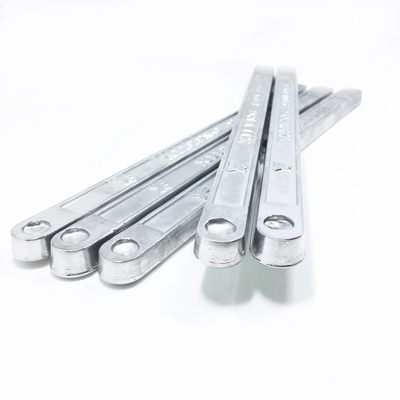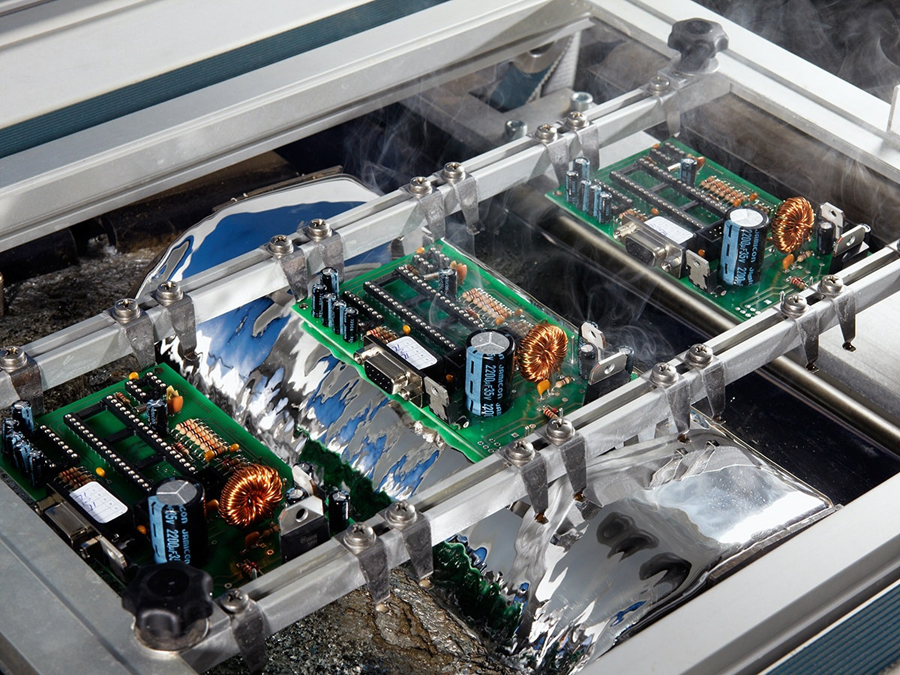Sn63Pb37 Leaded Tin Solder Bar for Wave Soldering
Sn63Pb37 Leaded Tin Solder Bar for Wave Soldering
Solder Bar is a metallic alloy that is used to
join two or more metal components together. It is melted and then allowed to
cool, forming a strong bond between the components. Solder bars are a form of
solder that are shaped into a bar or rod, making them easy to handle and use in
a variety of soldering applications. When during for electronics assembly, the
ways to use tin solder bar are by dip soldering or wave soldering.
One type of solder bar that is commonly
used in wave soldering is Sn63Pb37, which is a leaded tin solder. The
"Sn" in the name stands for tin, while the "Pb" stands for
lead. The numbers refer to the percentage of each metal present in the alloy.
In this case, the Sn63Pb37 solder contains 63% tin and 37% lead.
The use of lead in solder has been
controversial due to its potential toxicity and environmental impact. However,
lead has a lower melting point than tin and helps to improve the flow and wetting
properties of the solder. It is also less expensive than tin, which makes it a
popular choice for many soldering applications.

Why is Sn63Pb37 Solder Bar suitable for Wave Soldering?
One reason is that Sn63Pb37 solder has a
relatively low melting point of 183°C, which makes it easier to melt and work
with. This is important in wave soldering, as the process involves heating theleaded solder bar to its melting point and then allowing it to flow over the
components being soldered.
Wave soldering is a method of soldering
that is commonly used in the electronic manufacturing industry. It involves
using a wave of molten solder to flow over the components being soldered, which
helps to ensure that all of the joints are properly soldered. The components
are placed onto a circuit board and then passed through a wave of molten
solder, which is heated to the appropriate temperature. The solder is then
allowed to cool, forming strong and reliable connections between the components
and the circuit board.
What should we pay attention to when using Sn63Pb37 Solder Bar suitable for Wave Soldering?
There are a few things to consider when
using Sn63Pb37 solder bar for wave soldering. One is to ensure that the
components being soldered are properly prepared. This includes cleaning the
surfaces to be soldered and applying any necessary flux to help the solder flow
and wet the surfaces. It is also important to use the correct soldering
temperature, as overheating the solder can cause it to become brittle and
weaken the joint. And during the melting of solder bar, generally the surface
of the pot will have a little bit dross, these dross must be cleaned away
before we carry on with the wave soldering process.
Another consideration is the use of proper
soldering technique. It is important to apply the solder evenly and to avoid
creating any voids or gaps in the joint. Proper technique can help to ensure
that the joints are strong and reliable, and that the circuit board is fully
functional.
In addition to these considerations, it is
important to be aware of the environmental impact of leaded solder bar. For
some countries, there are ROHS regulation that doesn’t allow leaded solder bar
to be used, in this case it’s a must to use lead free solder bar.
And It is important to use proper
ventilation and safety equipment when working with leaded solder bar, and to
dispose of it properly to prevent it from entering the environment.

In summary, Sn63Pb37 leaded tin solder bar
is a popular choice for wave soldering due to its low melting point and good
flow and wetting properties. It is important to consider the proper preparation
of the components, the correct soldering temperature, and proper technique when
using this type of solder. It is also important to be aware of the potential
environmental impact of lead and to handle and dispose of it properly.
If you are looking for a supplier of Solder bar, please contact our sales team. Email: xfsolder@gmail.com or xfsolder@163.com , Whatsapp/Wechat: 008613450770997
